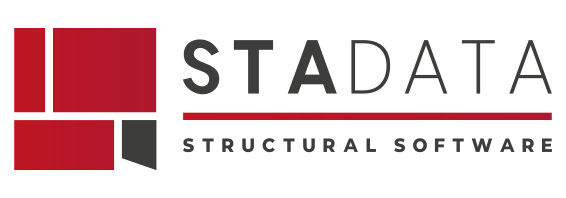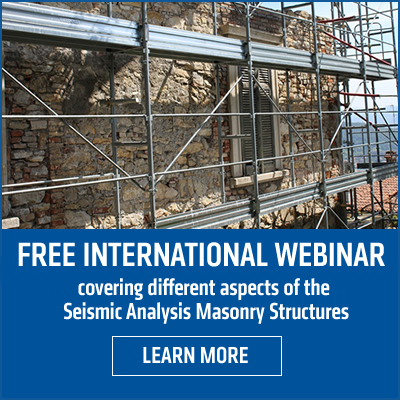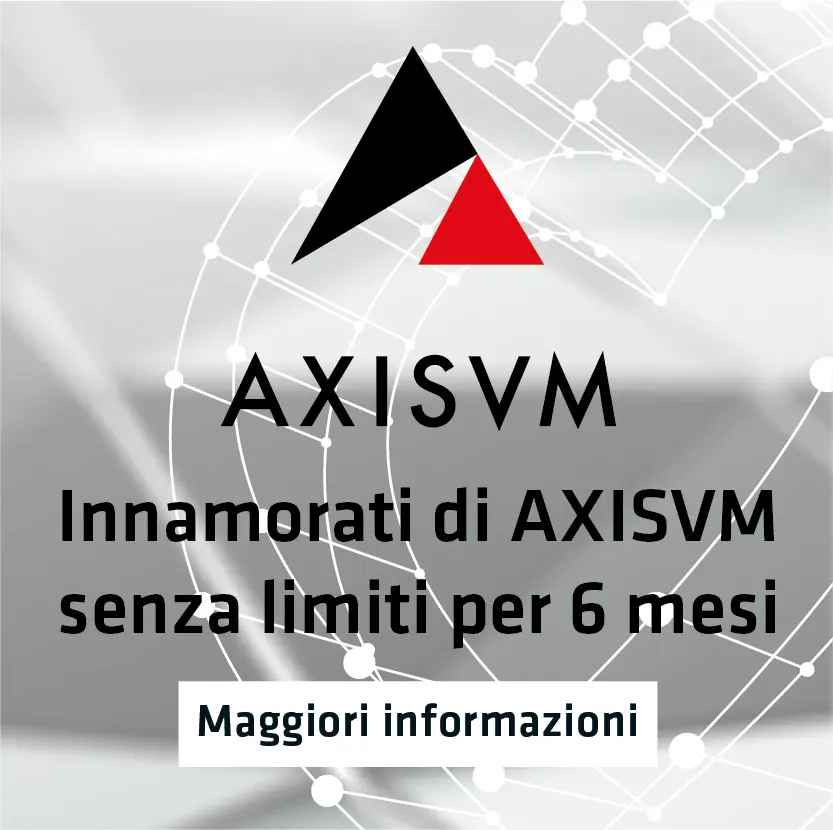Features

Seismic and static analysis of masonry structures
3Muri is the leading Italian program specifically created for the seismic and static calculation of masonry structures according to NTC 18, EC6, EC8, SIA. 3Muri is not simply an adaptation of a generic FEM software: it was developed specifically for the design of new buildings or the assessment of existing buildings, small or large, made of masonry and other materials (such as reinforced concrete, steel and timber).
The strengths of 3Muri are its extreme simplicity of use and a rigorous and innovative calculation method, recognised by the Italian and international scientific community.
The FME calculation method for push-over analysis
The FME - Frame by Macro Element - calculation method schematizes the structure by an equivalent frame consisting of a particular type of element, called a macro-element. The software solver has demonstrated its reliability through tests carried out at numerous national and international Universities and Research Centers, with results that faithfully represent the real behavior of the structures analyzed. From the analysis carried out, it is then possible to foresee the necessary seismic adaptation interventions, through the reinforcement of existing masonry or the insertion of new masonry or reinforced masonry elements.
Graphic environment
The software has a graphics module for the input of the structure with intuitive commands, a solver for the creation of the calculation model and its solution, and a post-processor for the immediate presentation of the results and the creation of the calculation report.
Normative references
In all input phases, it is possible to verify the requirements of the relevant standards and tables (e.g. material characteristics).
Multilingual and multi-norm
The software has a graphics module for the input of the structure with intuitive commands, a solver for the creation of the calculation model and its solution, and a post-processor for the immediate presentation of the results and the creation of the calculation report.
Ready for BIM
S.T.A. DATA has always kept pace with new technologies. A philosophy that naturally cannot exclude 3Muri, the software that represents an indispensable reference point for designers. This is why 3Muri is interoperable with the most widespread software that adopt the BIM methodology for input and output phase. This means that it can read and write IFC files both for the input phase and for connection with other BIM software (Revit®, Allplan®, Archicad®).
3Muri allows the modelling of different elements of the structure: walls, roofs, floors (the latter considered according to their actual stiffness).
It allows masonry structures to be calculated by modelling the different elements: walls, floors, roofs, additional elements in reinforced concrete, steel, wood (beams, columns, walls).
3Muri considers floors with the actual stiffness of their constituent elements; this makes it possible to simulate their overall behaviour and to assess their contribution, without necessarily making them infinitely rigid. In particular, all types of floor are considered:
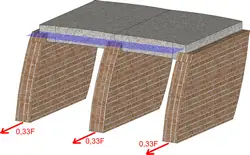
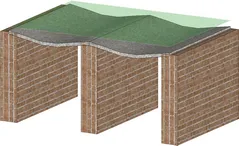
In fact, it is well known that the stiffness of the floor, especially for low-stiffness floors such as wooden floors, strongly influences the overall behaviour under earthquakes.
The model is built interactively, introducing the structure graphically and verifying the data and results at any time.
The first phase involves the fully graphic input of the structure through 'structural objects': masonry panels, beams and columns made of reinforced concrete, steel, wood, masonry, tie rods, and bond beams.
Subsequently, fundamental parameters for the push-over analysis such as the flexibility of the floors, are calculated automatically. Finally, the model is completed with the loads introduced directly on the floors, the constraints, and soil characteristics. The load distribution on the vertical elements is calculated automatically.
3Muri allows the insertion of elements by reading DXF and IFC drawings, defining the relevant material characteristics.
For all planned elements, there is a session dedicated to the input of geometry by reading drawings in DXF and IFC format.
Material insertion provides the possibility of calling up the tables provided for in the standard. In addition to simple elements such as wall panels, reinforced concrete, timber and steel beams, partitions and tie rods, 3muri also offers the possibility of inserting composite elements:
- Panel + tie beam
- Panel + beam
- Panel + tie rod
- Panel + reinforcements


Roof structures
Roofs in 3Muri are made up of a set of structural elements that are part of the active level; it is therefore possible to define a roof for each level. This mode of insertion makes it possible to define a roofing system with different heights.
Pitches can belong to different structural families, such as those of timber and concrete:
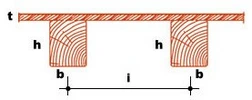

Non-structural roof
Structural roof
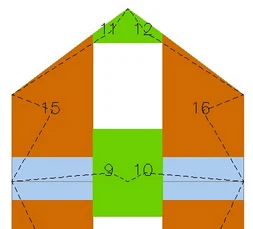
Example of mesh shown in the analysis environment

Actual heights used for calculation
Tracing roof profiles

Loads are applied directly on the floors. The self-weight of the masonry is automatically calculated while the loads of the floors, divided into permanent and variable, are automatically distributed to the masonry on which they rest according to their actual arrangement, one-way or two-way.
The load types available are:
concentrated on floors
concentrated on walls
linear on floors
linear on walls
distributed on floors and balconies
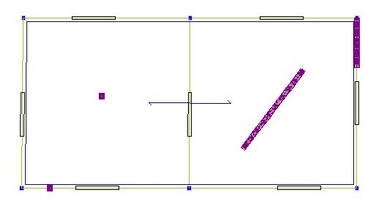
3Muri enables the calculation of new buildings through the modelling of all structural elements. The versatility of software allows the design of simple and complex buildings.
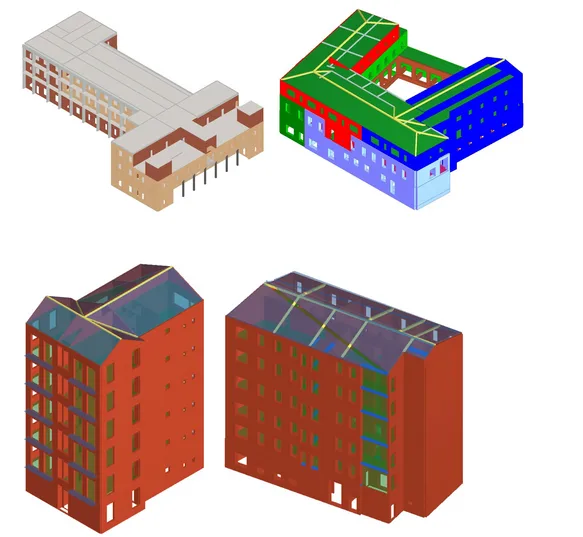
Chapter 8 of the NTC presents local retrofits, of improvement and adaptation; the simulation of these interventions can easily be carried out with 3Muri.
It is possible to use a wide range of reinforcing elements such as tie rods, FRP applications, reinforced plaster, wall injections, floor stiffening, etc.
Not all existing structures are capable of responding to the required seismic intensity, so it may be necessary to intervene with reinforcing works. In addition, reinforcing elements may have been added over time, which must be taken into account in the calculation model.
Chapter 8 of the NTC provides for local, improvement and retrofitting interventions; the simulation of these interventions can easily be carried out with 3Muri through a wide range of reinforcement elements such as: tie rods, FRP applications, reinforced plaster, wall injections, floor stiffening, etc.
New elements such as reinforced concrete beams, columns, partitions and walls, steel frames and braces can also be inserted.
If the elements cannot be fully determined, it is necessary to proceed with the simulated project, assuming what was planned at the time of construction.
The design of these elements is automatically linked with the Axis VM software. Further analyses can be performed with software SaiTu.
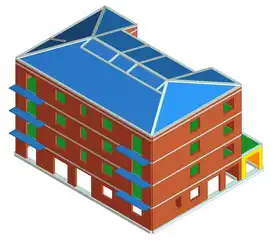

The structural model may also include elements that are subject to different types of reinforcement. In particular, it may be necessary to insert new elements in order to seismically adapt the structure that has not reached the required safety level.
Through the examination of the deteriorated elements, it is possible to identify the areas subject to reinforcement.
The types of reinforcement are:

Reinforced concrete and steel encirclements

Reinforcement in reinforced concrete and steel

tie rods

Profiles
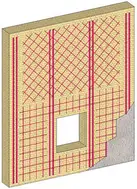
Reinforced masonry

Reinforcement with stiffening frames

Reinforcement with FRP/FRCM
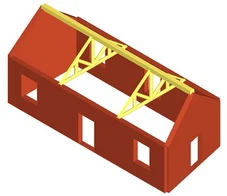
Beam reinforcements
Seismic and static analysis of masonry structures
3Muri is the leading Italian program specifically created for the seismic and static calculation of masonry structures according to NTC 18, EC6, EC8, SIA. 3Muri is not simply an adaptation of a generic FEM software: it was developed specifically for the design of new buildings or the assessment of existing buildings, small or large, made of masonry and other materials (such as reinforced concrete, steel and timber).
The strengths of 3Muri are its extreme simplicity of use and a rigorous and innovative calculation method, recognised by the Italian and international scientific community.
The FME calculation method for push-over analysis
The FME - Frame by Macro Element - calculation method schematizes the structure by an equivalent frame consisting of a particular type of element, called a macro-element. The software solver has demonstrated its reliability through tests carried out at numerous national and international Universities and Research Centers, with results that faithfully represent the real behavior of the structures analyzed. From the analysis carried out, it is then possible to foresee the necessary seismic adaptation interventions, through the reinforcement of existing masonry or the insertion of new masonry or reinforced masonry elements.
Graphic environment
The software has a graphics module for the input of the structure with intuitive commands, a solver for the creation of the calculation model and its solution, and a post-processor for the immediate presentation of the results and the creation of the calculation report.
Normative references
In all input phases, it is possible to verify the requirements of the relevant standards and tables (e.g. material characteristics).
Multilingual and multi-norm
3Muri is available in Italian, English, German, French, Greek and Albanian, and allows the use of Eurocode 6, Eurocode 8 and Swiss SIA standards. It is updated to the italian Technical Standards for Construction, DM 17-1-2018.
Ready for BIM
S.T.A. DATA has always kept pace with new technologies. A philosophy that naturally cannot exclude 3Muri, the software that represents an indispensable reference point for designers. This is why 3Muri is interoperable with the most widespread software that adopt the BIM methodology for input and output phase. This means that it can read and write IFC files both for the input phase and for connection with other BIM software (Revit®, Allplan®, Archicad®).
